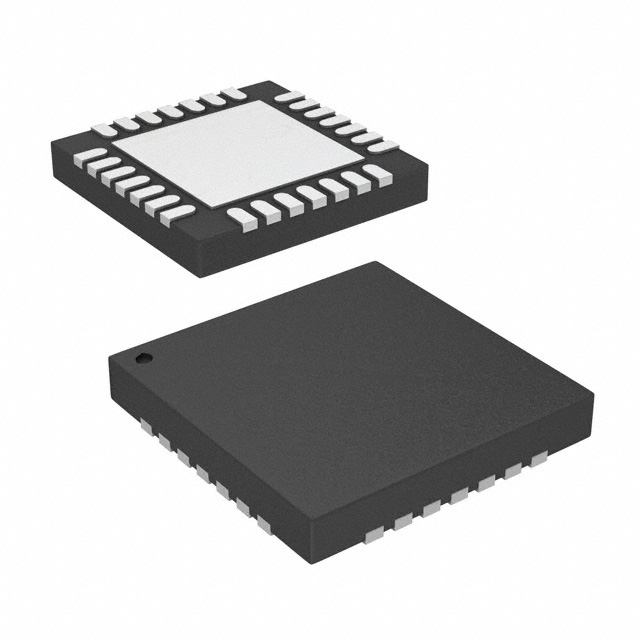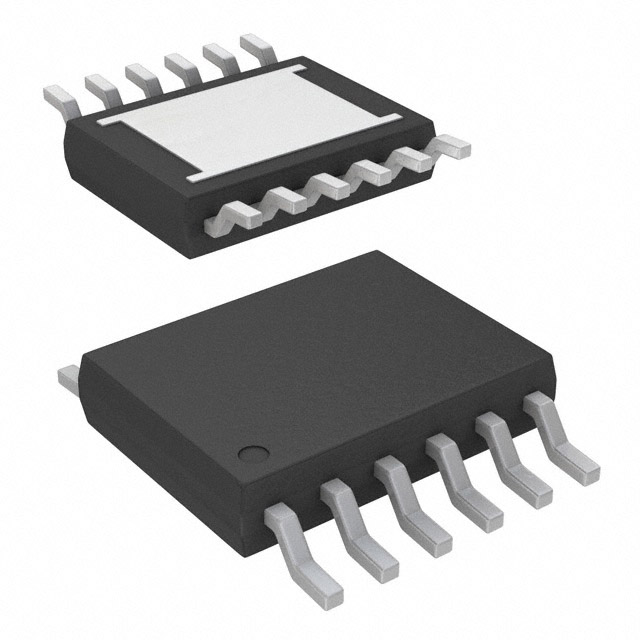Ⅰ. PMIC - Voltage Regulators - Linear + Switching
Ⅱ. Physical Characteristics of PMIC - Voltage Regulators - Linear + Switching
Ⅲ. Electrical Characteristics of PMIC - Voltage Regulators - Linear + Switching
PMIC stands for Power Management Integrated Circuit, and it encompasses a variety of functions related to power management within electronic systems. One crucial component of PMICs is voltage regulators, which are responsible for maintaining stable and regulated voltage levels for different parts of the system. There are two main types of voltage regulators found in PMICs: linear regulators and switching regulators.PMIC - Voltage Regulators - Linear + Switching

1.Linear Voltage Regulators: Linear voltage regulators are simple and straightforward devices that provide a constant output voltage by dissipating excess voltage as heat. They consist of a pass transistor and a feedback control mechanism. When the input voltage exceeds the desired output voltage, the pass transistor drops the excess voltage, resulting in a regulated output. Linear regulators offer low output voltage noise and are suitable for applications that require low noise levels and simple circuitry. However, they are less efficient compared to switching regulators, especially when there is a significant voltage drop between the input and output.
2.Switching Voltage Regulators: Switching voltage regulators, also known as DC-DC converters, are more complex but highly efficient. They operate by rapidly switching the input voltage on and off to maintain the desired output voltage. Switching regulators use an inductor and a control circuit to store energy during the on-time and deliver it to the load during the off-time. By controlling the duty cycle of the switch, the output voltage is regulated. Switching regulators are more efficient because they minimize power dissipation and are capable of stepping up or stepping down the input voltage, making them suitable for applications with high voltage differences between input and output. However, they generate more output voltage ripple compared to linear regulators.
The choice between linear and switching voltage regulators depends on the specific requirements of the application. Factors such as efficiency, output voltage noise, input-output voltage difference, load current, and cost play a role in selecting the appropriate type of voltage regulator for a given system.

In some PMICs, both linear and switching regulators are integrated to provide different voltage outputs for different components of the system. This allows for efficient power management, as linear regulators can be used for low-noise, low-current applications, while switching regulators are employed for higher current or larger voltage differences. The combination of linear and switching voltage regulators in a PMIC provides flexibility and optimization for various power management needs within electronic systems.
Physical Characteristics of PMIC - Voltage Regulators - Linear + Switching
The physical characteristics of Power Management Integrated Circuits (PMICs) with voltage regulators, including both linear and switching regulators, can vary based on factors such as the package type, size, pin count, and thermal considerations. Here are some common physical characteristics:
1.Package Type: PMICs with voltage regulators come in different package types, such as Dual In-Line Package (DIP), Small Outline Package (SOP), Quad Flat Package (QFP), Ball Grid Array (BGA), and others. The choice of package type depends on factors such as the size and complexity of the IC, thermal considerations, and the number of pins required.
2.Size: The physical size of PMICs can vary depending on the complexity of the circuitry and the number of integrated components. PMICs can range from small, compact packages for low-power applications to larger packages for high-power or multi-functional devices.
3.Pin Count: The number of pins on a PMIC determines the input/output connections available. PMICs with voltage regulators may have a varying number of pins, depending on the number of inputs, outputs, and control interfaces required for proper power management.
4.Thermal Considerations: PMICs with voltage regulators often generate heat during operation. These ICs may incorporate thermal pads, heat sinks, or exposed paddle designs to dissipate heat effectively. Advanced packaging techniques such as ceramic packages or flip-chip technologies may be used to enhance thermal management.
5.Environmental Considerations: Depending on the application, PMICs with voltage regulators may have specific environmental requirements. For example, automotive-grade PMICs may require rugged packaging to withstand harsh operating conditions like high temperatures, vibrations, or moisture. Other PMICs may have extended temperature range specifications or enhanced resistance to electromagnetic interference (EMI).
6.Mounting Methods: PMICs with voltage regulators can be mounted on printed circuit boards (PCBs) using various methods, including through-hole mounting, surface-mount technology (SMT), or advanced techniques like flip-chip or ball grid array (BGA) technologies. The mounting method depends on the specific package type and the manufacturing requirements.
These physical characteristics of PMICs with voltage regulators are carefully designed to meet the requirements of the target applications. Manufacturers consider factors such as size constraints, thermal management, pin count, and environmental considerations to provide efficient and reliable power management solutions for various electronic devices and systems.
Electrical Characteristics of PMIC - Voltage Regulators - Linear + Switching
PMICs with voltage regulators, including both linear and switching regulators, possess specific electrical characteristics that define their behavior and performance. These electrical characteristics ensure proper voltage regulation and power management within electronic systems. Here are some common electrical characteristics:
1.Input Voltage Range: PMICs with voltage regulators have specified input voltage ranges within which they can operate properly. This range defines the minimum and maximum voltage levels that the PMIC can accept as the input supply. It is crucial to provide the PMIC with an input voltage within this specified range to ensure correct operation.
2.Output Voltage Regulation: Voltage regulators in PMICs are designed to maintain a stable and regulated output voltage despite fluctuations in the input voltage or variations in the load conditions. The output voltage regulation specifies the allowable deviation from the desired output voltage under different load conditions.
3.Output Current Capability: PMICs with voltage regulators have a maximum output current capability, which indicates the maximum amount of current the regulator can deliver to the load while maintaining the specified output voltage regulation. It is important to ensure that the load current requirements of the system are within the capabilities of the voltage regulator.
4.Efficiency: The efficiency of a voltage regulator refers to the ratio of the output power to the input power. It indicates how effectively the PMIC converts the input power into the desired output power. Higher efficiency leads to less power dissipation and improved energy utilization. Switching regulators generally offer higher efficiency compared to linear regulators.
5.Load Regulation: Load regulation is the ability of a voltage regulator to maintain a constant output voltage despite changes in the load current. It specifies the maximum allowable change in the output voltage for a given change in the load current. Good load regulation ensures stable and reliable operation of the electronic system.
6.Line Regulation: Line regulation refers to the ability of a voltage regulator to maintain a constant output voltage despite variations in the input voltage. It specifies the maximum allowable change in the output voltage for a given change in the input voltage. Proper line regulation is important for systems where the input voltage may vary due to factors such as battery voltage fluctuations or changes in the power supply.
7.Ripple and Noise: Voltage regulators can introduce some amount of output voltage ripple and noise due to their operation. Ripple refers to small variations in the output voltage caused by the switching action or other factors, while noise refers to high-frequency fluctuations. PMICs with voltage regulators typically specify the allowable levels of ripple and noise in the output voltage.
These electrical characteristics of PMICs with voltage regulators ensure reliable and efficient power management within electronic systems. They help maintain stable output voltage, provide protection against voltage fluctuations, and ensure proper operation of various components and subsystems within the system. It is essential to consider these characteristics when selecting and designing with PMICs for specific applications.



